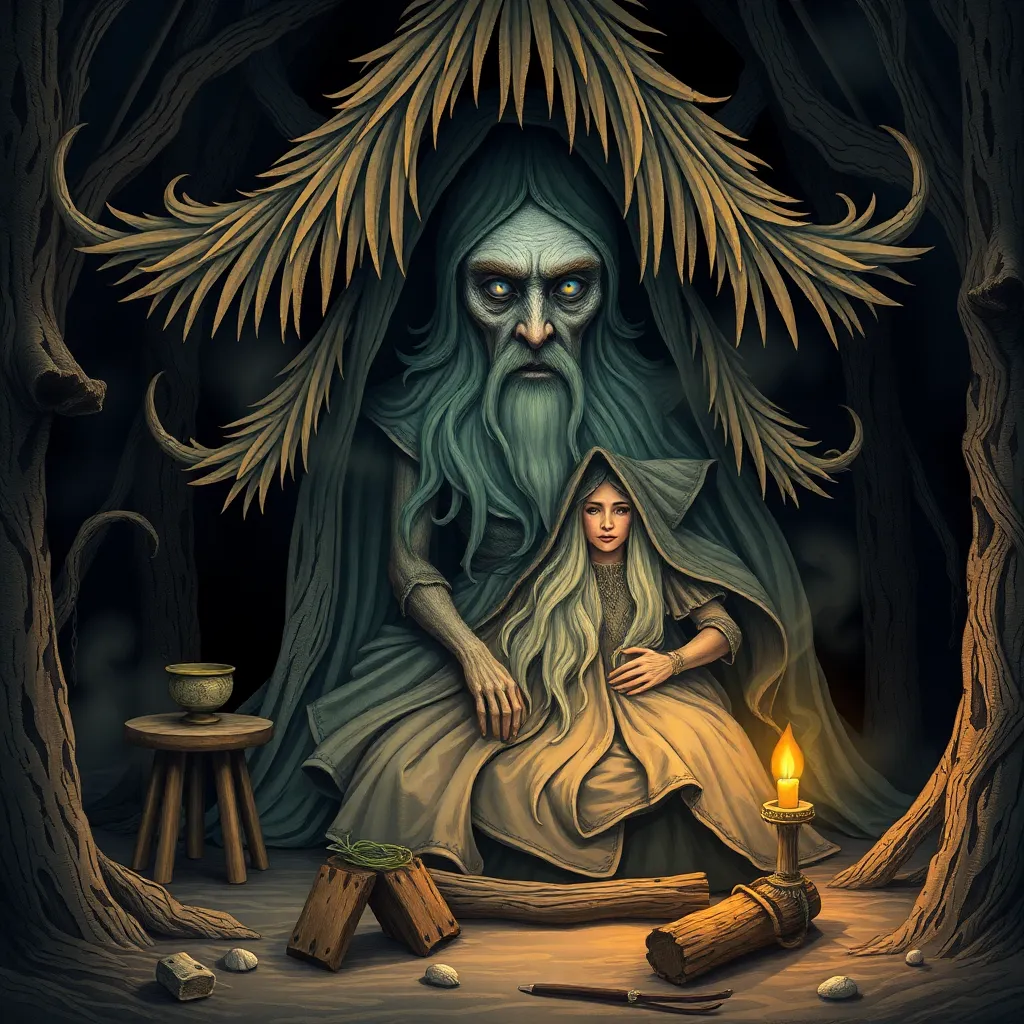Baba Yaga: A Comparative Study of Folklore in Slavic Cultures
I. Introduction
Baba Yaga is a prominent figure in Slavic folklore, often depicted as a witch or a supernatural being who embodies a complex blend of wisdom, danger, and transformation. This enigmatic character carries significant cultural weight across various Slavic nations, serving as a symbol of both fear and respect.
The purpose of this comparative study is to explore the various portrayals of Baba Yaga across different Slavic cultures—namely Russian, Polish, and Ukrainian. By examining her characteristics, narratives, and cultural significance, we can gain insight into the shared and divergent elements of Slavic folklore.
The cultural contexts in which Baba Yaga exists are rich and diverse, reflecting the historical roots and societal values of the Slavic peoples. Understanding these contexts is crucial for appreciating the multifaceted nature of this legendary figure.
II. Origins and Historical Context
The origins of Baba Yaga can be traced back to ancient Slavic mythology, where she is often associated with the wilderness, the underworld, and the cycle of life and death. Historical records suggest that the figure of Baba Yaga has evolved over centuries, adapting to the changing beliefs and practices of Slavic societies.
As Slavic cultures transitioned from paganism to Christianity, the figure of Baba Yaga retained pre-Christian elements, such as her connection to nature and the supernatural. She is frequently depicted as a guardian of the forest, embodying the duality of nurturing and threatening aspects of nature.
III. Baba Yaga in Russian Folklore
In Russian folklore, Baba Yaga is often portrayed as a fearsome old woman who lives in a hut that stands on chicken legs. Her key characteristics include:
- Ambiguity: She can be both a helper and an antagonist.
- Wisdom: Baba Yaga possesses ancient knowledge and often provides guidance.
- Magic: She is associated with potions, spells, and the ability to fly.
Common tales featuring Baba Yaga often revolve around young heroes or heroines who seek her out for help or must confront her to achieve their goals. Notable narratives include “Vasilisa the Beautiful” and “Ivan Tsarevich and the Grey Wolf.” In these stories, her role is multifaceted, symbolizing the challenges and wisdom that come with growth and transformation.
Within Russian culture, Baba Yaga serves as a symbol of the wild, untamed aspects of nature and the subconscious. She embodies the struggles between civilization and the primal instincts that reside within humanity.
IV. Baba Yaga in Polish Folklore
Polish interpretations of Baba Yaga reveal distinctive features and variations compared to her Russian counterpart. In Poland, she is often known as “Baba Jaga” and is characterized by:
- A more maternal aspect, sometimes acting as a protector.
- A penchant for riddles and tests, challenging those who seek her help.
Notable stories include “The Three Sisters” and “The Dragon’s Daughter,” which showcase her role as a mediator between the human world and the supernatural. The cultural implications of these tales often reflect Polish values, such as resilience, cleverness, and the importance of family bonds.
When compared to Russian depictions, Polish stories tend to emphasize the moral lessons learned through encounters with Baba Jaga, highlighting her role as a teacher rather than merely a threat.
V. Baba Yaga in Ukrainian Folklore
In Ukrainian folklore, Baba Yaga, often referred to as “Baba Yaha,” presents unique interpretations and representations. Key aspects include:
- A closer relationship with the earth and agrarian practices.
- A focus on community and societal roles, often acting as a wise elder.
Ukrainian tales, such as “The Tale of the Golden Cockerel,” illustrate her significance as a figure who mediates between the natural and supernatural realms. The cultural significance of Baba Yaga in Ukraine is deeply intertwined with local traditions and agricultural cycles.
While similarities exist with Russian and Polish versions, Ukrainian portrayals often emphasize her role in fostering community resilience and wisdom in the face of adversity.
VI. Regional Variations and Common Themes
A comparative analysis of Baba Yaga across Slavic cultures reveals both shared characteristics and distinct regional variations. Common themes in Baba Yaga stories include:
- Wisdom: She often provides guidance, albeit in a challenging manner.
- Danger: Encounters with Baba Yaga can be perilous, reflecting the unpredictable nature of life.
- Transformation: Characters often undergo significant personal growth through their interactions with her.
Baba Yaga also serves as a boundary figure in folklore, symbolizing the threshold between civilization and the wild, the known and the unknown. Her presence challenges characters to confront their fears and desires, ultimately leading to transformation and self-discovery.
VII. Modern Interpretations and Adaptations
In contemporary literature, film, and art, Baba Yaga has experienced a resurgence of interest, often reinterpreted through modern lenses. Contemporary adaptations include:
- Literary works that portray her as a misunderstood figure.
- Films that explore her dual nature, blending horror and humor.
- Artistic representations that highlight her connection to nature and femininity.
The resurgence of interest in folklore has led to a re-evaluation of traditional narratives, with many modern adaptations reflecting or altering the meanings associated with Baba Yaga. This transformation demonstrates the enduring relevance of folklore in contemporary culture, as it resonates with ongoing societal themes of identity, empowerment, and the struggle between tradition and modernity.
VIII. Conclusion
This comparative study reveals the rich tapestry of Baba Yaga’s character across Slavic cultures, highlighting both commonalities and differences in her portrayal. Key findings indicate that while she is often perceived as a fearsome witch, her role is far more complex, encompassing wisdom, transformation, and societal reflection.
The enduring legacy of Baba Yaga in Slavic cultures underscores the importance of folklore in shaping cultural identity and values. As a multifaceted figure, she continues to captivate audiences, inviting exploration of the human experience through the lens of myth and storytelling.
Understanding Baba Yaga’s role in folklore not only enriches our appreciation of Slavic cultural heritage but also illustrates the universal themes that transcend cultural boundaries, illuminating the intricate relationship between humanity, nature, and the supernatural.
https://www.youtube.com/watch?v=3IQOeOS-z9M



